Date palms have edible fruit but –with wild or ornamental plants there is often a “but” — the quality of the fruit can range from sweet and tasty to mealy and bitter. Much depends upon the weather. Locally they tend to drop off the tree before reaching an edible quality, but not always.
Ask any lawn maintenance crew, date palms are fairly easy to identify: They are usually armed with frond spikes two or more inches long. This leads to a lot of pruning which actually increases disease and early death in date palms. These palms can range from the cultivated versions that give us the dates we buy to small ornamental varieties. Date palms are native to cool dry areas so they can take winter temperatures into the 20’s, some into the teens. The more common varieties are the Canary Island Date Palm (Phoenix canariensis) Senegal Date Palm (Phoenix reclinata) Pygmy Date Palm (Phoenix roebelinii) Edible or “True” Date Palm (Phoenix dactylifera — which means finger producing) and the Wild Date Palm (Phoenix sylvestris.) In Southern California fruit date palms on public property are mapped so folks can find them and collect semi-ripe fruit. While dark fruits are sweet, less mature ones that are yellow to red are also edible if you don’t mind the taste. Dates actually go through four stages of development. Green, when they are hard and bitter, their sugar content masked by the bitterness. The second state they are still hard but yellow to red, sweeter. They are half ripe in the third stage and turning brown. Lastly there are soft and sweet. If you pick them early they might not be too palatable, and the weather can also cause them to drop too soon. It takes persistence and luck to find some edible dates, at least in humid Florida. In southern California the weather is good but watering correctly is a problem. Dates are the luck of the draw.
The rains came down and the mushrooms came up. We are in the fall cycle and among the edibles arising are the highly esteemed Chanterelles (don’t confuse them with the gut-wrenching Jack O’Lanterns.) Also up now are some edible Lactarius and at least Chestnut Boletes. In northern Florida and points farther north Honey Mushrooms are also clumping up. But we usually don’t see them here for another six weeks or so. Mushrooms take a lot of study and time. I am content to learn one new (edible) species a year. They are a game in which no mistakes are allowed. But even if you don’t want to eat mushrooms looking for mushrooms is treasure hunting for adults. You also learn a lot more about the environment you are in. There’s a lot going on below ground! For those who are interested I have several mushroom pages on Facebook including the Florida Mushroom Identification Forum, and, Southeastern US Mushroom Identification. They are approaching a thousand members.
If you are heading to nearly anywhere on the west coast of Florida anytime soon check out official reports for Red Tide. This is caused by Karenia brevis an algae that flares up this time of year. I once wrote an article about it which included a visit to Daytona Beach during a “bloom.” It reminded me very much of the tear gas I experienced in the military… itching eyes, burning nasal passages and throat, coughing. It was almost a flash back. Besides the obvious breathing issue consumption of fish and shellfish harvested during a red tide is considered dangerous. While deaths are few the neurotoxin can make you feel dizzy, among other things. The explosion of the microscopic organisms also kill off Manatees.
After this weekend the class schedule and newsletter production will be a bit sporadic for a month as I have to attend family business out-of-state. Barring accident or injury this week’s classes in Winter Park and particularly West Palm Beach will occur as scheduled.
Saturday, October 4th Mead Garden,1500 S. Denning Dr., Winter Park, FL 32789, 9 a.m. We will be sharing the park with bird watchers… just to let you know…
Sunday, October 5th, Dreher Park, 1200 Southern Blvd., West Palm Beach, 33405. 9 a.m.
Saturday, October 25th, Bayshore Live Oak Park, 23000 Bayshore Rd., Port Charlotte, FL 33980, 9 a.m.
Thursday, October 30th, Emerson Point Preserve, 5801 17th Street West, Palmetto, FL 34221. This class is part benefits Eat Local Week of greater Sarasota. The class starts at 9 a.m. and goes to 11 a.m., cost is less than usual, $20. To learn more about other events of that week go here.
Eat The Weeds On DVD. My foraging videos do not include alligators but they do cover dozens of edible plants in North America. The set has nine DVD. Each DVD has 15 videos for 135 in all. Some of these videos are of better quality than my free ones on the Internet. They are the same videos but many people like to have their own copy. I burn and compile the sets myself so if you have any issues I handle it. There are no middle foragers. And I’m working on adding a tenth DVD. To learn more about the DVDs or to order them click here.
On the Green Deane Forum we post messages and pictures about foraging all year-long. There’s also a UFO page, for Unidentified Flowering Objects so plants can be identified. Recent topics include: Top Ten Herbs, Paleo Goodies, American Beautyberry, Two Portulacas, Herbalist Question, Another Blue Berry, The Trails Are Getting Longer, Hard Apple Cider, Pawpaws, Manmade Foods and Obesity, Screwdriver Roach Trap, Berry Tree of Some Sort, Need a Smile? and Processed foods are Diabolical. The link to join is on the right hand side of this page.
If you would like to donate to Eat The Weeds please click here.

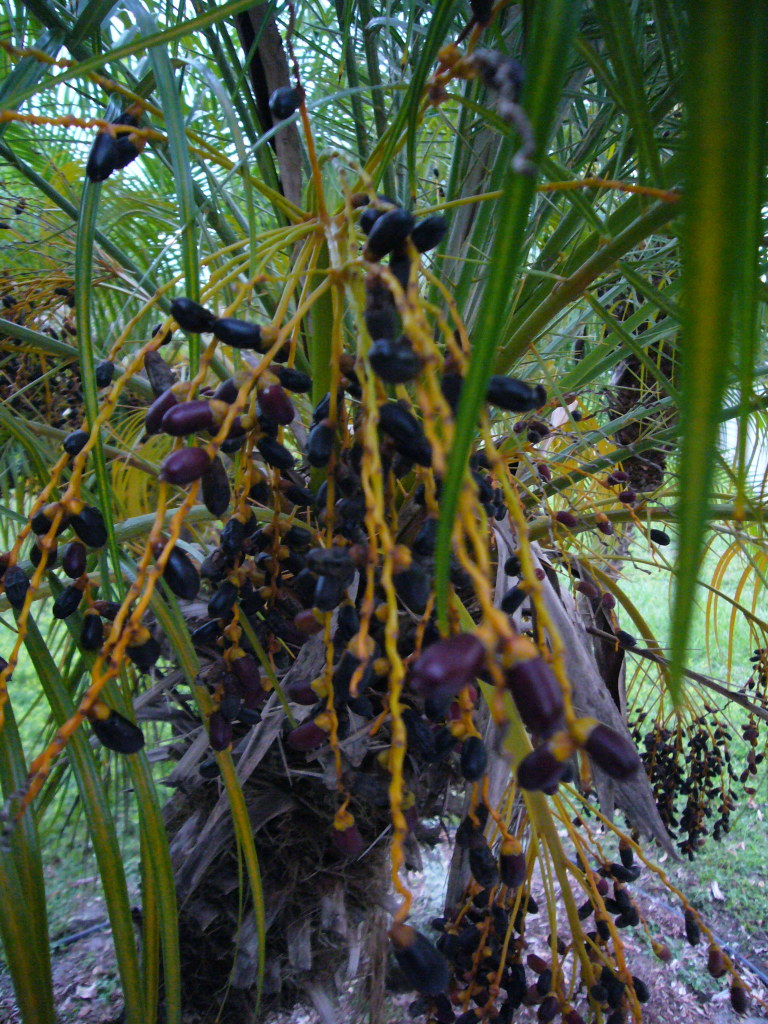
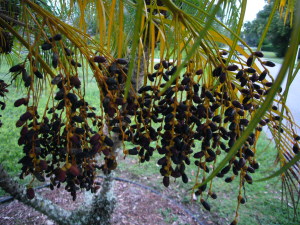
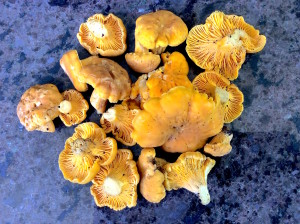
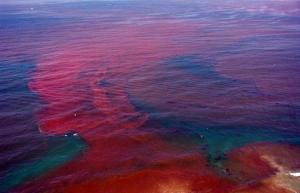
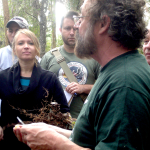
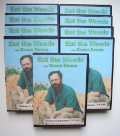
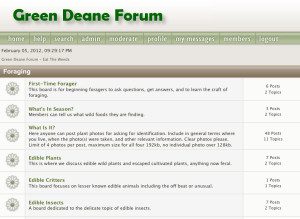

Thank you for the article on purslane as I have some volunteers and I thought they were editable and you confirmed it with your site. The northern variety of milkweed (the kind with the pods and fluff) are editable. The tender leaves on top and boil like spinach. Very sweet and delicious. Wish they grew in Florida
In my Kafouri district of Khartoum North, many people including myself grow the cultivated version and the small ornamental variety of the Date Palm. “ Dates which drop off before reaching an edible quality “ reminds me my foraging hobby when I was even less than ten years old (forties of last century ). I used to go in early morning and collect a pocket-full of such dates fallen under some apparently tall palm trees during a windy rainy August night – what a treasure! Now over seventy I have to be selective in eating dates; some types make me feel diabetic. I prefer dates having reached the period just before the third stage when they are about to turn brown – may be due to sugar changes. Worth mentioning that, in general, Date Palm trees are grown widely in both North and Nile Provinces in Sudan mainly for food; but you rarely miss these plants in other parts of the country. Even in some streets of the capital Khartoum e.g. Nile Street Date Palm trees are grown for their beauty.
This newsletter mentions that fruit date palms on public property are mapped out in California. Where can I find this information? I’ve done a Google search, and can’t seem to find any mention of mapped date palms on public lands. Can you point me in the right direction?